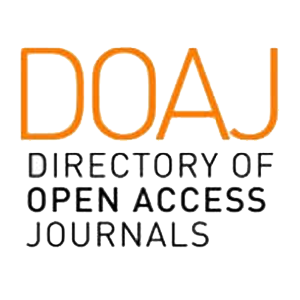Segmentación estructural del mercado de trabajo en México
Abstract
The article presents the behavior of the agents (workers and employers) and the way in which the earnings of different categories of workers is determined. It shows how the labor market valued the productive knowledge of the workers (schooling, training, and work experience), as well as the empirical results of this evaluation. It is argued that workers' competition for jobs in an economy with labor surpluses presses wages to decline, mainly in the informal segment, a fact that will increase inequality in the distribution of earnings.
Downloads
References
Alarcón, D. y T. MacKinley. (1995). “The paradox of narrowing differentials and widening wage inequality in Mexico” en Development and change, volumen 28, número 3, pp. 505-530.
Bell, M. y P. Pavitt, P. (1997). “Technological Accumulation and Industrial Growth” en D. Archibugi y J. Michie, Technology Globalization and Economic Performance. Cambridge: Cambridge University Press, pp. 83-137.
Carnoy, M. (2000). Sustaining the New Economy: Work, Family, and Community in the Information Age. Cambridge: Harvard University Press.
Cereijido, M. (2004). Por qué no tenemos ciencia. México: Siglo XXI.
Cunningham, W. y W. Maloney. (2001). “Heterogeneity among Mexico’s Microenterprises: An Application of Factor and Cluster Analysis” en Economic Development and Cultural Change, volumen 50, número 1, octubre, pp. 131-156.
Fägerlind, I. y L. Saha. (1983). Education and National Development: A Comparative Perspective. Oxford: Pergamon Press.
Freeman, R. (1994). “How Labor Fares in Advanced Economies” en R. Freeman, Working Under Different Rules. Nueva York: Russell Sage Foundation, pp. 1-28.
Gregory, P. (1986). The Myth of Market Failure. Washington: World Bank Research Publications.
Hallak, J. y F. Caillods. (1981). Education, Training and the Traditional Sector. Paris: UNESCO / IIP .
Hernández, E.; Garro N. e I. Llamas. (2000). Productividad y Mercado de Trabajo en México. México: Plaza y Valdés.
Joll, C.; McKenna, C.; McNabb, R. y J. Shorey. (1983). Developments in Labour Market Analysis. London: George Allen & Unwin.
Kahneman, D. (2012). “The focusing Illusion” en J. Brockman (ed.) This will make you smarter. Nueva York: Harper Perennial, pp.49-50.
Kaufman, B. E. (1988). “The Postwar View of Labor Markets and Wage determination” en B. E. Kaufman (comp.), How Labor Markets Work. Reflections on Theory and Practice. Lexington: Lexington Books, pp 485-500.
Lester, R. (1951). Labor and industrial relations, a general analysis. Nueva York: Macmillan.
Levin, H. y C. Kelley. (1997). “Can Education Do it Alone?” en A. Hasley, H. Lauder, P. Brown y A. Wells, Education: culture, economy, and society. Oxford: Oxford University Press, pp. 240-251.
Llamas, I. (1989). Educación y mercado de trabajo en México. México: Universidad Autónoma Metropolitana Iztapalapa.
Llamas, I. (2018). “Educación y desarrollo socioeconómico: algunos temas fundamentales” en J. L. Calva (coord.), Sistema Nacional de Educación, ciencia, tecnología y Competitividad. México: Porrúa.
Llamas, I. y N. Garro. (1995). “El rendimiento de la escolaridad, la capacitación y la experiencia laboral en el Área Metropolitana de Monterrey” en Ensayos, XIV , volumen 1, pp. 79-106.
Llamas, I. y N. Garro. (2003). “Trabajo, formalidad, escolaridad y capacitación” en E. De la Garza y C. Salas, La situación del trabajo en México, 2003. México: Plaza y Valdés, pp. 151-175.
Maloney, W. (1997). “Labor Market Structure in LDC s: Time Series Evidence on Competing Views” en International Bank For Reconstruction And Development Working Paper, número 1940. Versión electrónica en https://papers.ssrn.com/sol3/papers.cfm?abstract_id=82948
Middleton, J.; Ziderman, A. y A. Van Adams. (1993). Skills for Productivity: Vocational Education and Training in Developing Countries. Nueva York: Oxford University Press.
Organización Internacional del Trabajo ( OIT ). (1987). World Labor Report, volumen 1. Génova: OIT .
Organización para la Cooperación y Desarrollo Económico ( OCDE ). (1997). Estudios Económicos de la OCDE . México 1996-1997. México: OCDE .
Panagides, A. y H. Patrinos. (1994). “Union, non-union wage differential in the developing world: A case study of Mexico” en World Bank, Policy Research Working Paper, número 1269. Versión electrónica en http://documents.worldbank.org/curated/en/973081468761413414/Union-nonunion-wage-differentials-in-the-developing-world-a-ca-se-study-of-Mexico
Rees, A. (1966). “Information networks in labor markets” en America Economic Review, vol. 56, pp. 559-566.
Spence, M. (1973). “Job Market Signaling” en The Quarterly Journal of Economics, volumen 87, número 3, pp. 355-374.
Sperber, D. (2012). “Cultural Attractors” en J. Brockman (ed.), This will make you smarter. Nueva York: Harper Perennial, pp. 180-1873.
Thurow, L. (1975). Generating Inequality. Nueva York: Basic Books. Zwell, M. (2000). Creating a Culture of Competence. Nueva York: John Wiley & Sons.

This work is licensed under a Creative Commons Attribution-NonCommercial-ShareAlike 4.0 International License.














